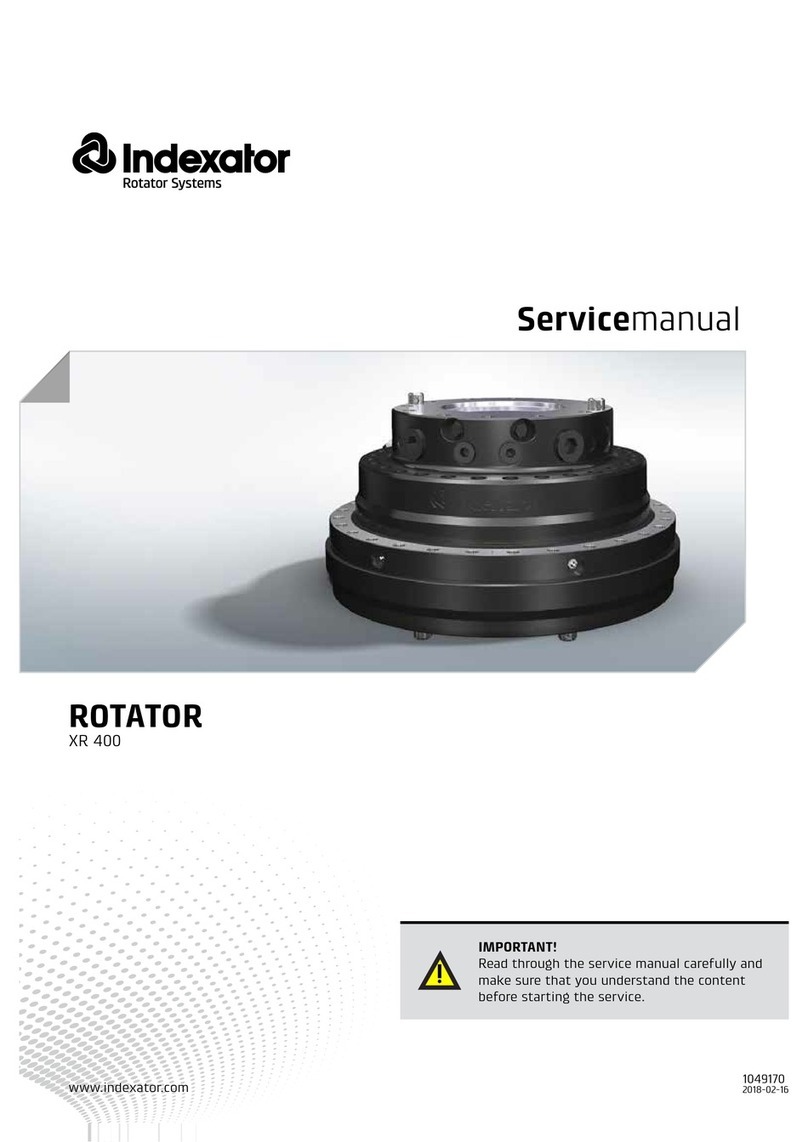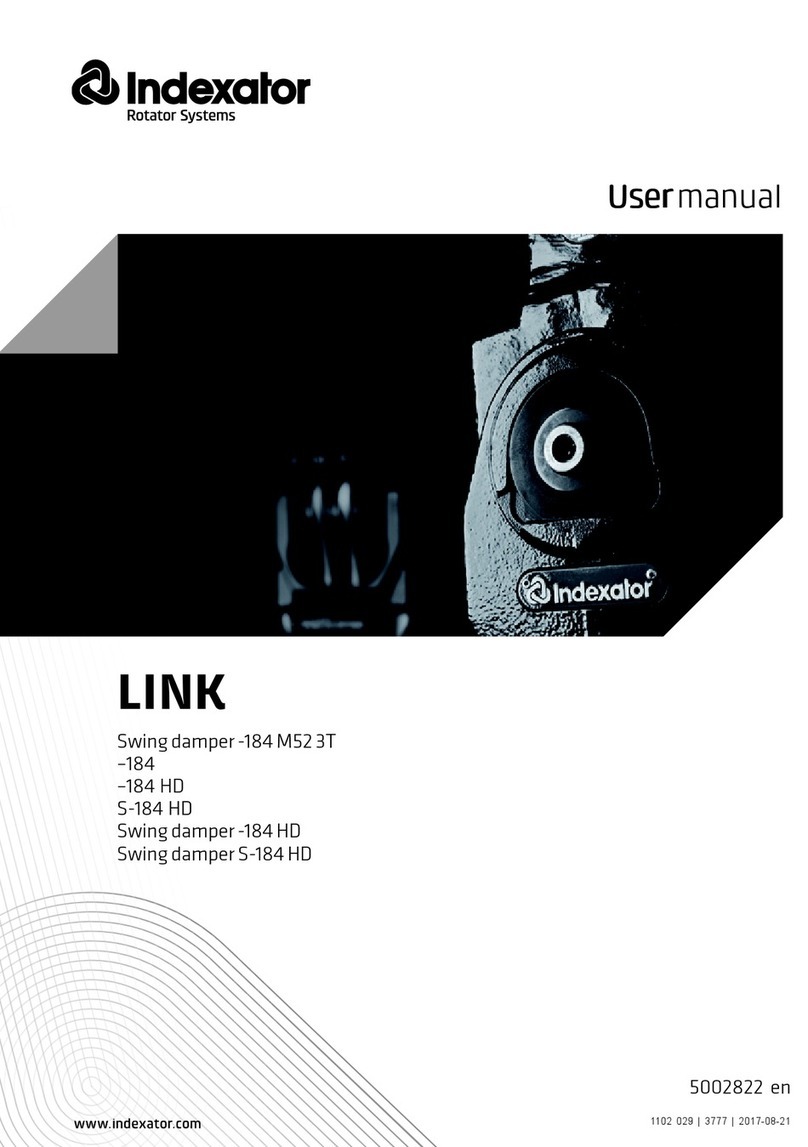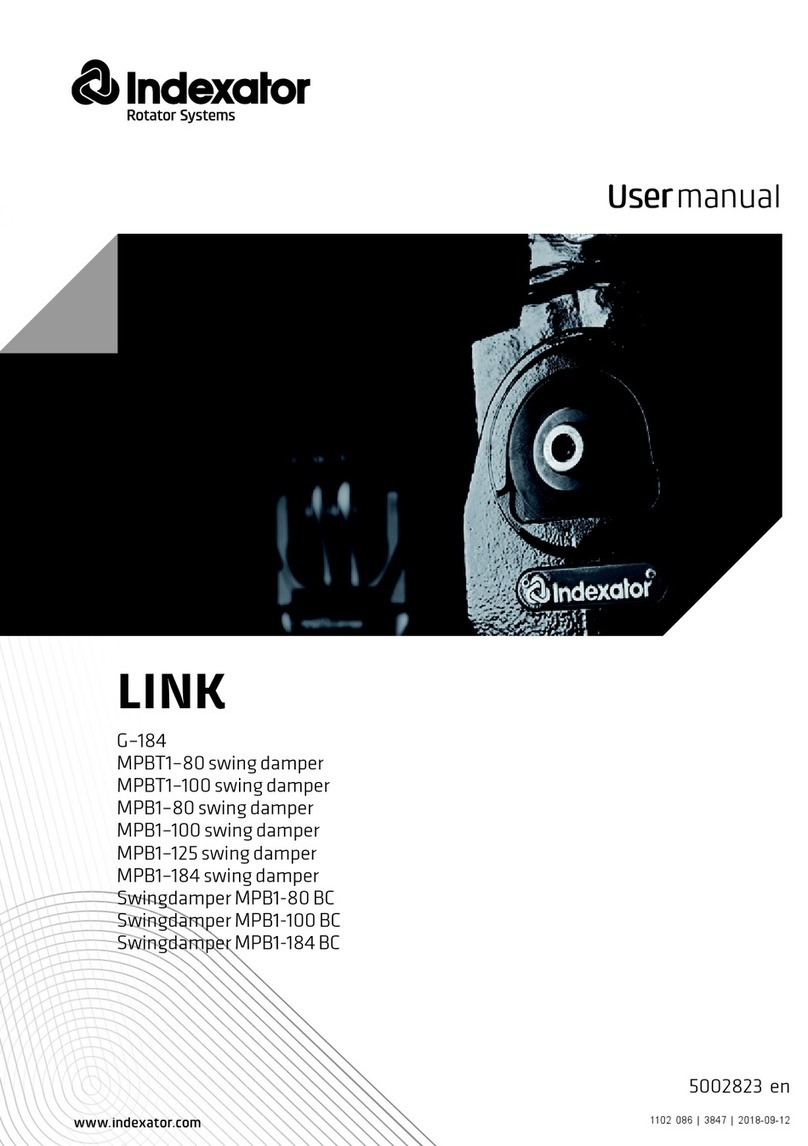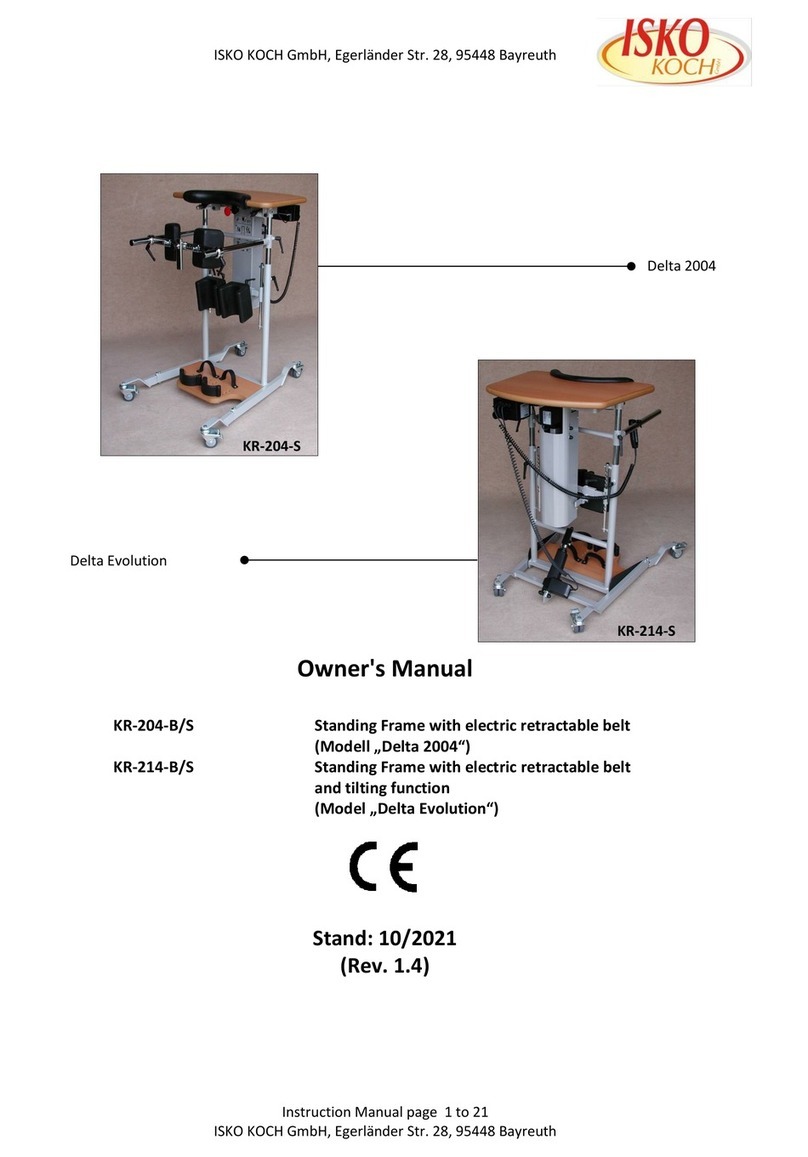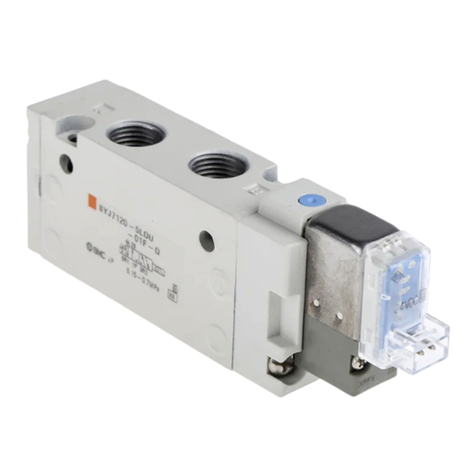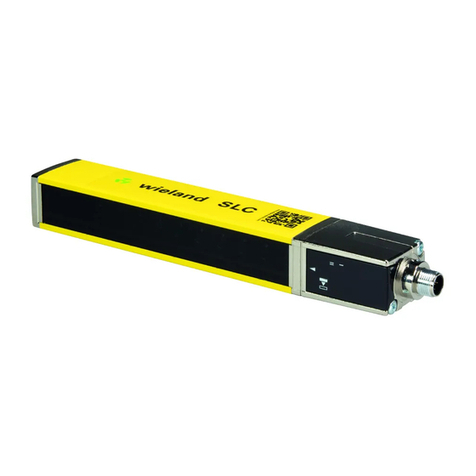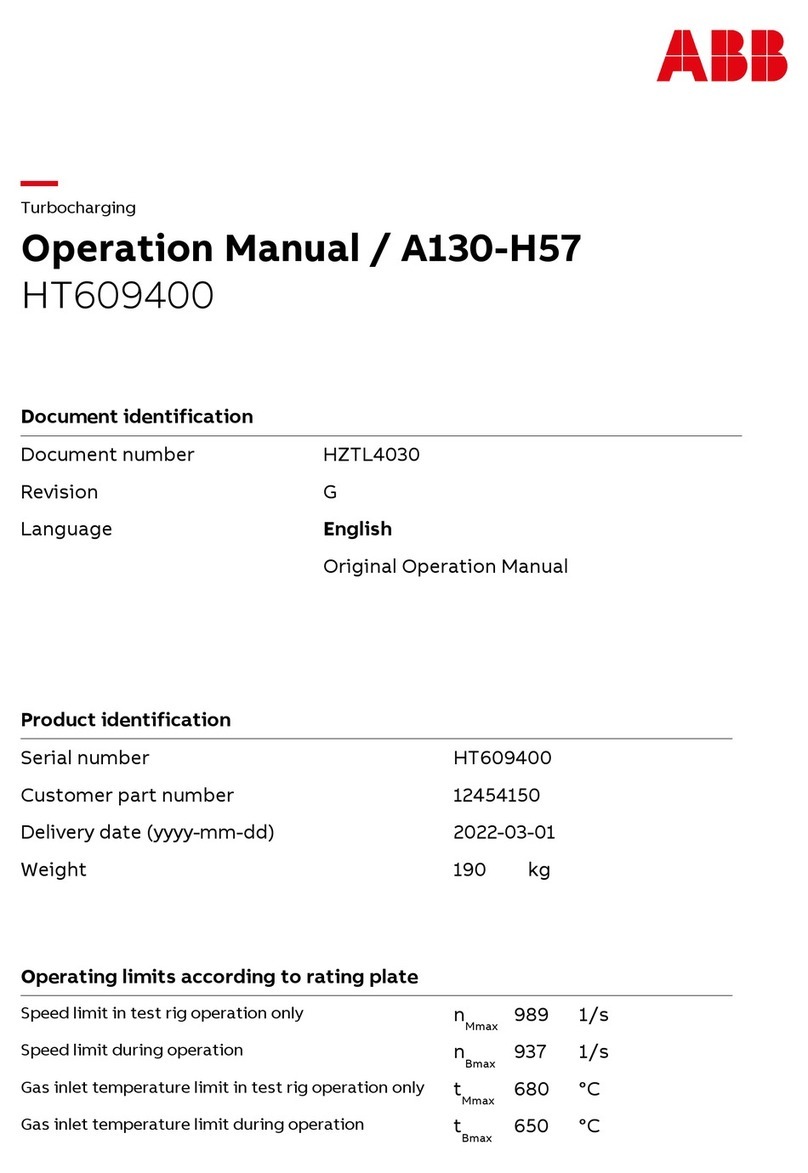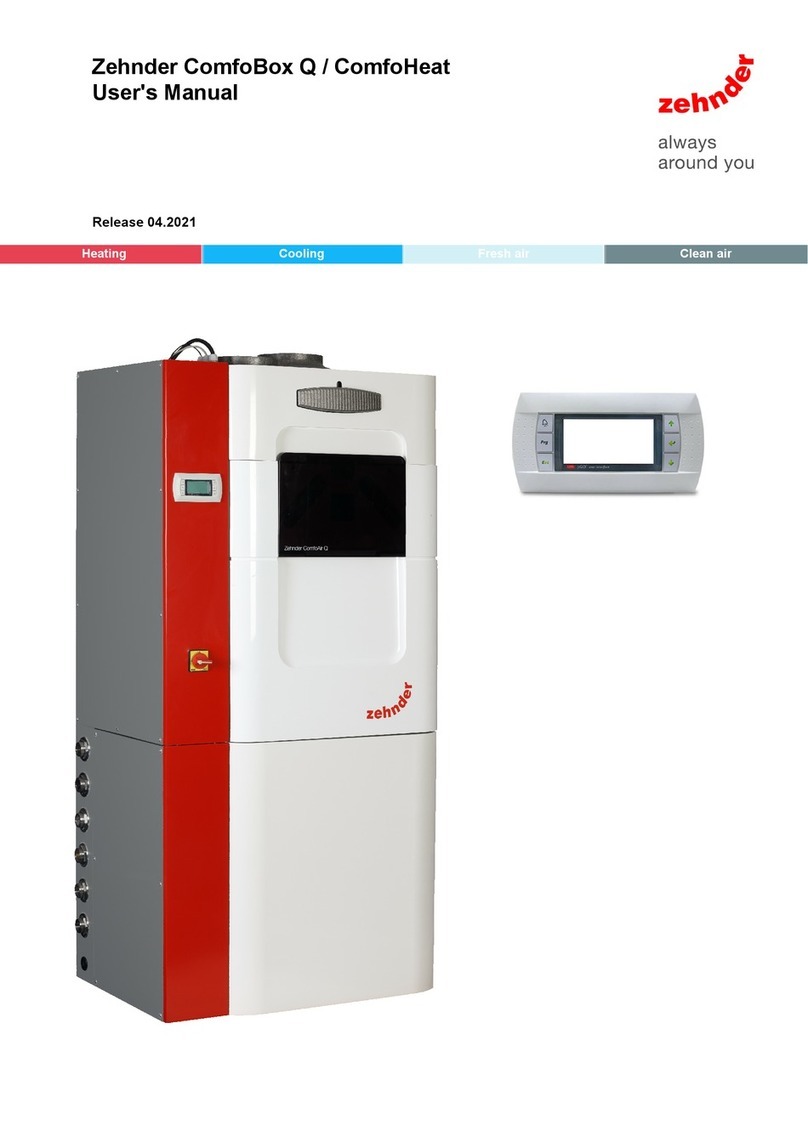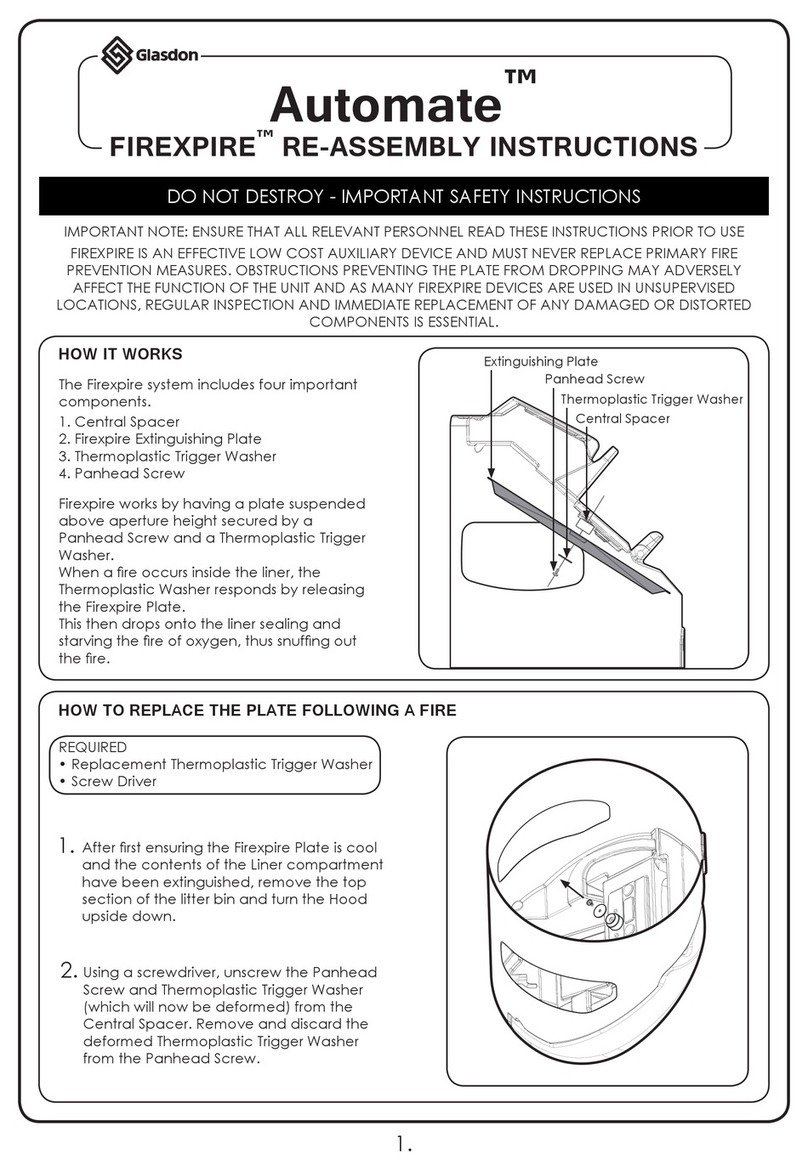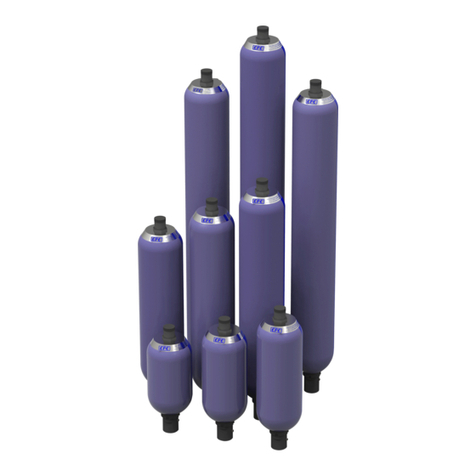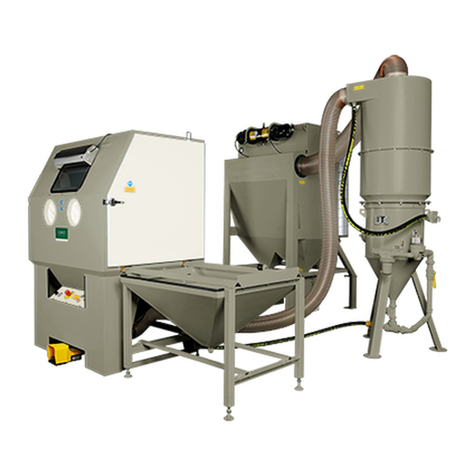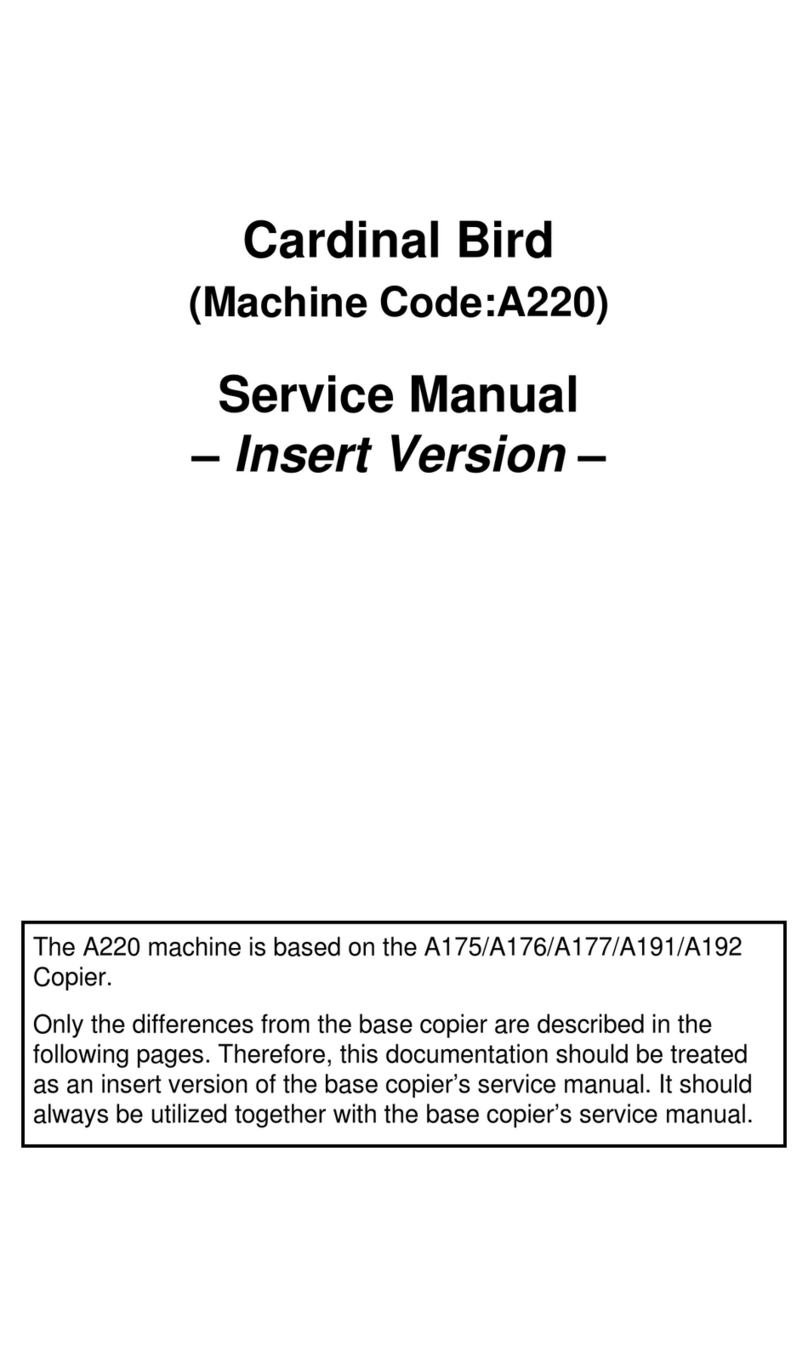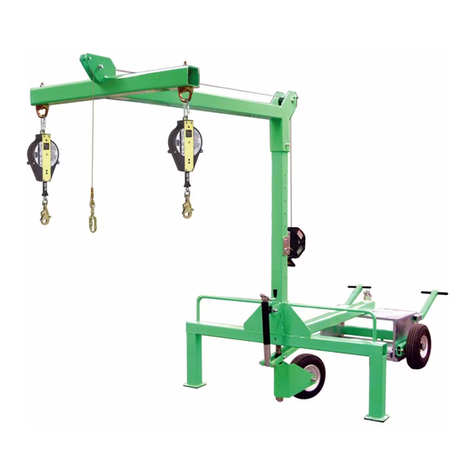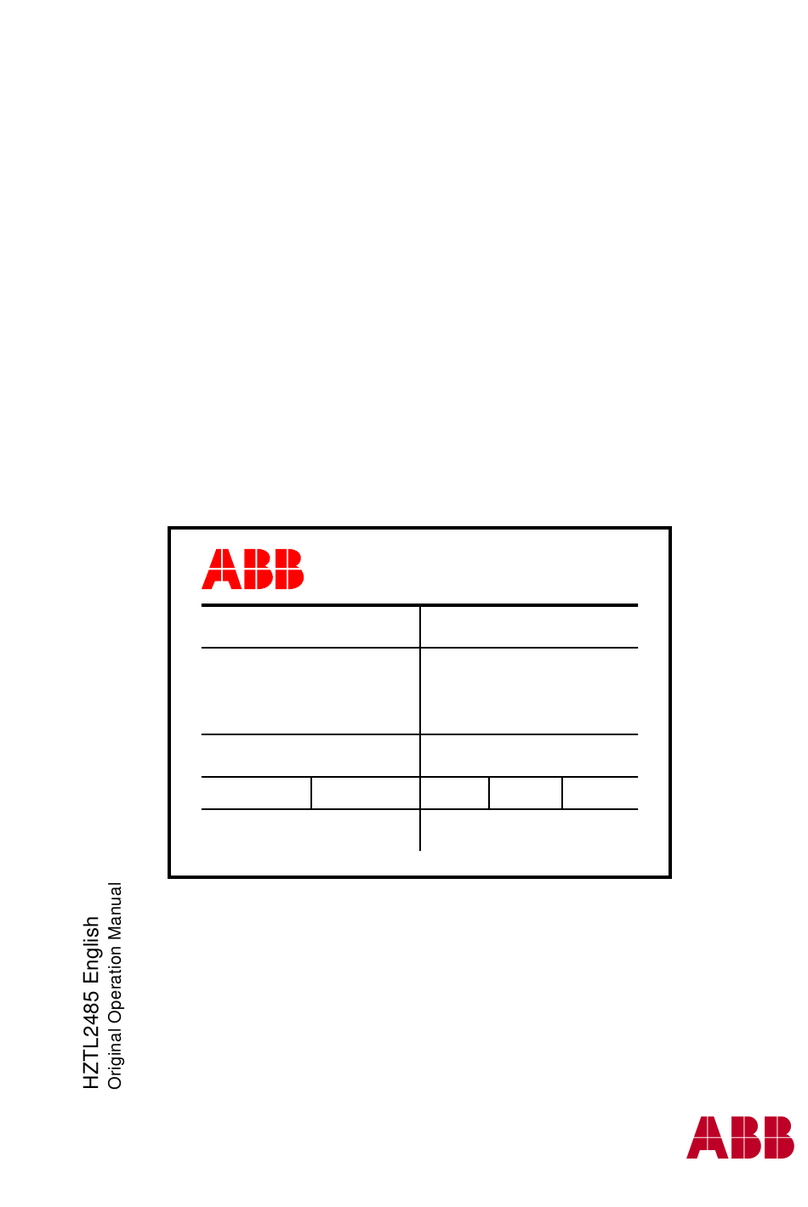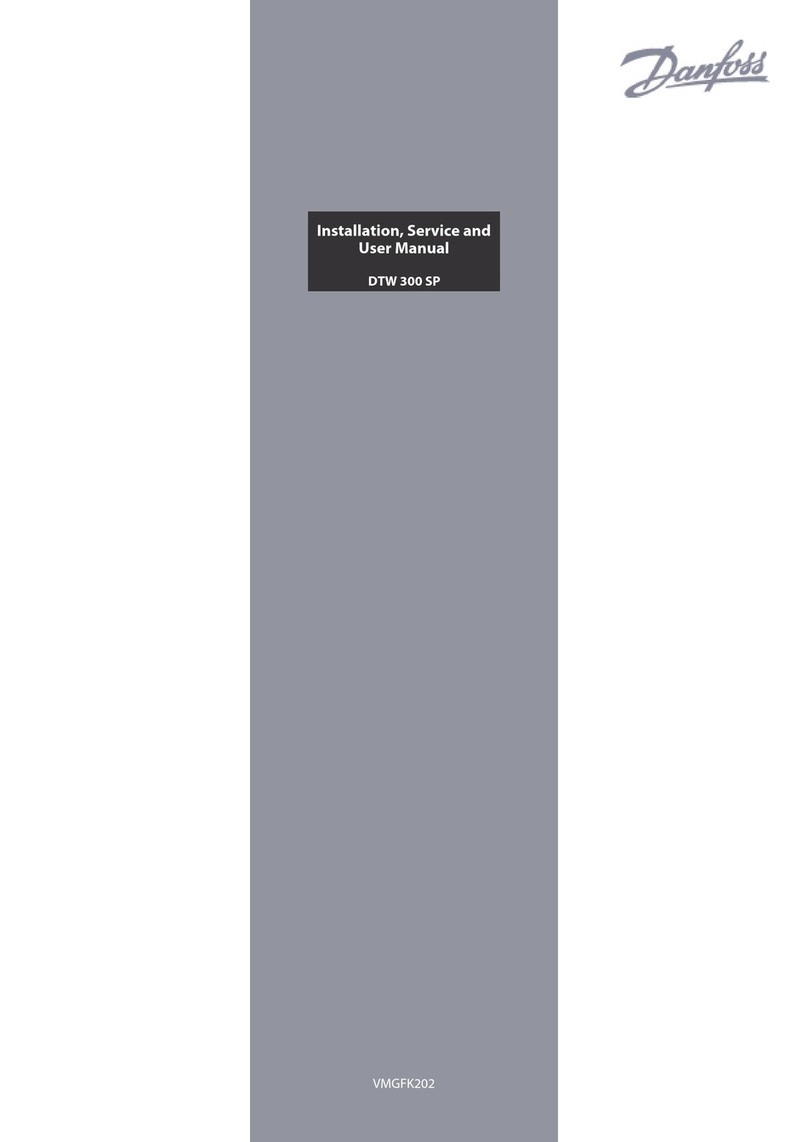Indexator LINKSYS MPB1-80/45 KPL User manual

www.indexat or.com
LINKSET
| 3447 |2015-02-10
Dual Swingdamper MPB1-80/45 KPL
Dual Swingdamper MPB1-100/45 KPL
Dual Swingdamper MPB2-100/45 KPL
Dual Swingdamper MPB2-100/45C KPL
Dual Swingdamper MPB2-CRH KPL
Dual Swingdamper MPB2-CRH C KPL
1048 826
5002806 en
User User
Usermanual

2
1. Description
This product is designed for the supen-
sion of a freely hanging load.
Adapted for use in combination with
Indexator’s H-rotators. The products
brake unit is designed to reduce the
oscillating action. The disc should be
kept free of grease and oil to ensure
the best braking effect.
1.1 Warning
The locking rings are a safety feature,
preventing parts from being ejected from
the spring-action brake assembly in the
event of bolt fracture. It is therefore
essential that the locking ring is always in
place when adjusting/tightening. The
locking rings may only be removed when
the brake springs are not compressed
(loosely adjusted), eg, when replacing
the brake lining.
2. Safety instructions
2.1 Check that
2.1.1 the locking rings B are mounted, see also
4.1.2.
Check every 250 hours of operating.
2.2 Thelink’sworkingareamustbesuf
ciently large to allow handling of free
vertically suspended loads. The link
must not come into contact with the
oscillation stop in the crane nose.
2.3 Avoid oscillating the rotator to the stop
positions of the link.
Max. angle of oscillation +90°.
2.1.1 - Locking rings (B)

3
3. Safety sticker
3.1 The sticker should be positioned so that
it is easily visible to the driver without
hindering the view.
3.2 The sticker is self-adhesive. The surface
to which the sticker is attached must be
thoroughly cleaned.
4. Assembly instructions for the lower
brake
4.1 For rotator and swing damper
4.1.1 Check that the bushings are correctly
attached and that the required number of
lubrication holes are present.
4.1.2 Fit the pins Aso that the stop is turned
downwards. Fit the locking rings Band
secure them with clamping rings C
(with the groove turned outwards).
4.2 Dismantle
4.2.1 Dismantle in the reverse order. Make
sure that the grapple/harvesting head
and rotator are steady. Prize the clam
ping rings loose Cpossibly using a
grooving chisel. Then loosen the locking
rings Band then remove the pins A.
4.3 Assembly of the brake system
4.3.1 Assemble the brake discs Dso that the
feet are turned downwards, towards
the rotator. Worked surface Xturned
towards the brake lining.
4.3.2 Assemble the brake lining Eso that the
feet are turned upwards, away from the
rotator.Incorrectttingwilldamagethe
rotator.

4
4.4.2
4.3.3 The sleeves G, have to be greesed both
in- and outside, and the tube Hgreesed
ourside with copper paste or similar.
4.3.4 Assemble sleeves Gfrom each direction
and then feed into the centre pipe Hto
the centre.
4.3.5 Assemble the adjustment screws F. Re
commended braking moment is achieved
when the adjustment screw Fis tightened
until it stops. Notice that max. tightening
tourque is 60 Nm. If less brake power is
required, the adjustment screw Fcan be
untightened.
4.4 Dismantle
4.4.1 Dismantle in the reverse order.
4.4.2 In order to extend the service life time of
the bearing, after 2000 h the brake disc
has to be disassembled and the bearing
race turned 360 degrees.
5. Assembly instructions for the upper
brake
5.1 Warning
Please notis the warning instruction,
see 1.1.
5.2 Changing and maintaining the brake
lining, screw complete and brake disc
5.2.1 Unscrew the locking nut. Unscrew the
bolted joint.Remove the locking rings,
change or clean the lining.Clean the
brake disc.
Bolted joint
Screw complete
Flanged nut
Locking nut

5
5.2.5
5.2.2 Itisimportantwhenrettingthatthecup
springs are mounted according to Fig. 1.
Remembertotbackthelockingrings
before tightening. Position the locking
rings so that they are easily accessible
for tools/pliers.
5.2.3 It is important that linings are replaced in
time to prevent the steel plate that is
gluedtotheliningfromchang/damaging
the brake disc.
5.2.4 The screw complete must regulary be
inspected and replaced. Changing the
screw when changing the brake lining
is recommended.
5.2.5 For saftey reasons and i order to get
max. effect of the brake the brake disc
ought to be replaced when the thickness
(t) varies more than 1,0 mm, see picture
5.2.5.
5.3 Adjustment
5.3.1 For safety reasons, allow the locking
rings to remain in place. Unscrew
the locking nut before tightening. Hold
theange-nutandtightenthescrew.
Maximum tightening torque for the
bolted joint is 30 Nm.
Greater tightening torque will result in
greater wear and worsen the safety.
Secure the bolted joint with the locking
nut after adjusting.
5.3.2 The pin in the crane nose is assembled
in accordance with the crane
manufacturer’s recommendations.
Indexator recommends:
SurfacenenessRa<1,25µm(50µin)
Surface hardness > 50 HRC
Locking nut
Locking ring
Fig 1 (brake kit 80)

6
6.1 6.2
6.3
6.4
6.5
6.7
6.8
6. Maintenance instructions
6.1 Lubricate the link’s bearings every 50
hours.
6.2 In order to achieve the best operating
purpose possible the sleeves Gshould
be greesed both in- and outside, and the
tube Hgreesed outside with copper
paste or similar every 1000 working
hours. See 4.3.3.
6.3 Adjust the brake when necessary,
see 4.3.5.
6.4 Check that there are no cracks in the
upper or lower attachment of the rotator.
6.5 Check that no abnormal play has arisen
in the link´s bearing. Differences in
excess of 1,0 mm must be corrected.
6.6 If any leakage of hydraulic oil should
occur, it might be necessary to clean the
brake discs. To disassamble and assem
ble, see item 4.3.
If any of the problems in points 6.4, 6.5
are detected, contact your dealer,
for replacement of worn and defective
defective components.
6.7 In order to preserve the function and
a long service life of the swing damper
the brake linings have to be checked
and cleaned every 600 working hours or
every second month.
• Dismount the brake package.
• Remove the grinding dust that piled up
in the cavities of the lining.
• Rotate the inner race of the bearing 360
degrees. See sketch below.
• Reassemble the brake package if the
bearing runs smoothly with no play.
If there is play in the bearing, if it feels
tight, or if the rubber seal is damaged the
bearing should be replaced.
7. Technical data
For futher technical information we refer
to our product data sheets.


Indexator Rotator Systems
Tel + 46 933 148 00
rotator@indexator.com
www.indexator.com
This manual suits for next models
5
Table of contents
Other Indexator Industrial Equipment manuals
Popular Industrial Equipment manuals by other brands
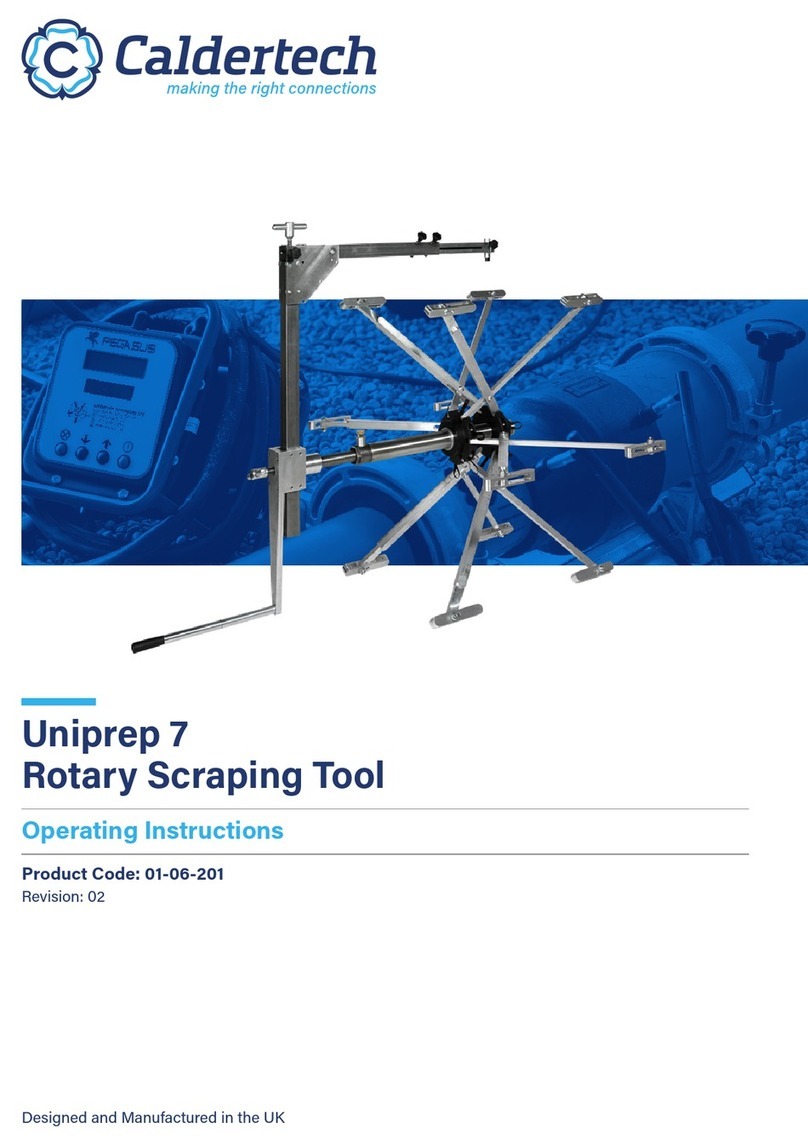
Caldertech
Caldertech Uniprep 7 operating instructions
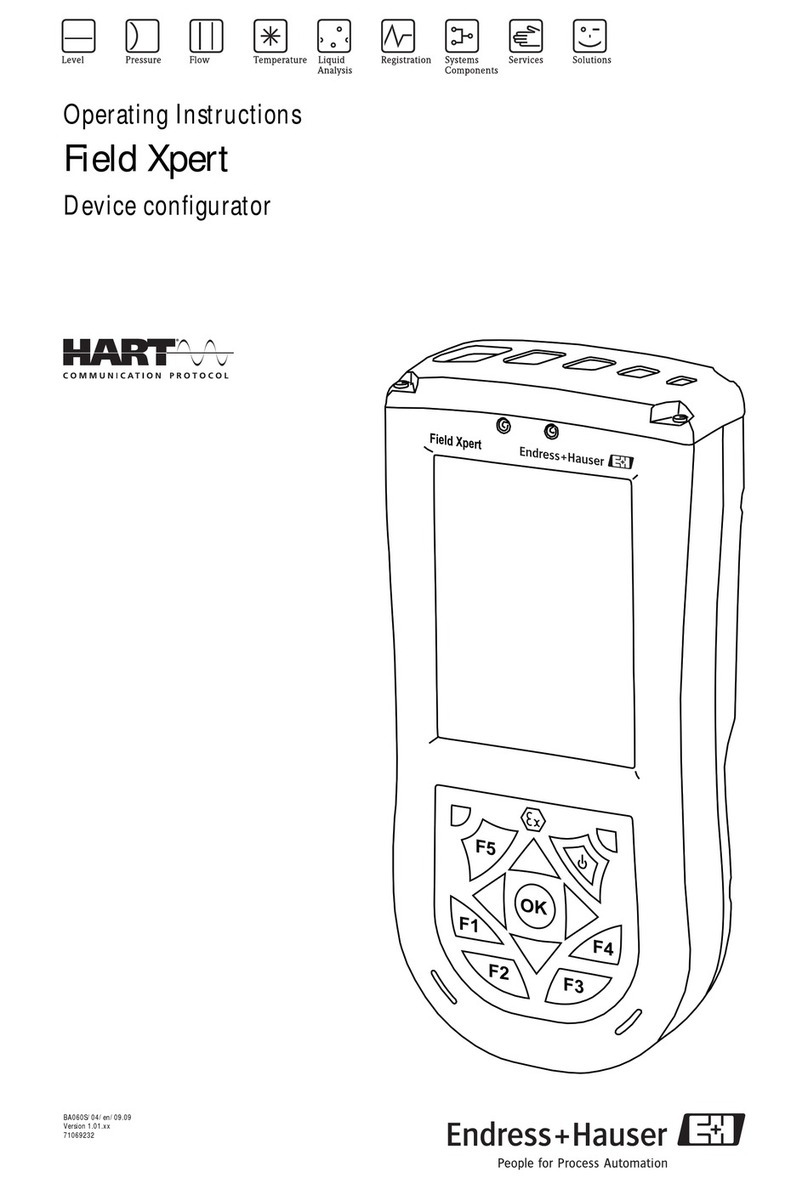
Endress+Hauser
Endress+Hauser HART Field Xpert operating instructions
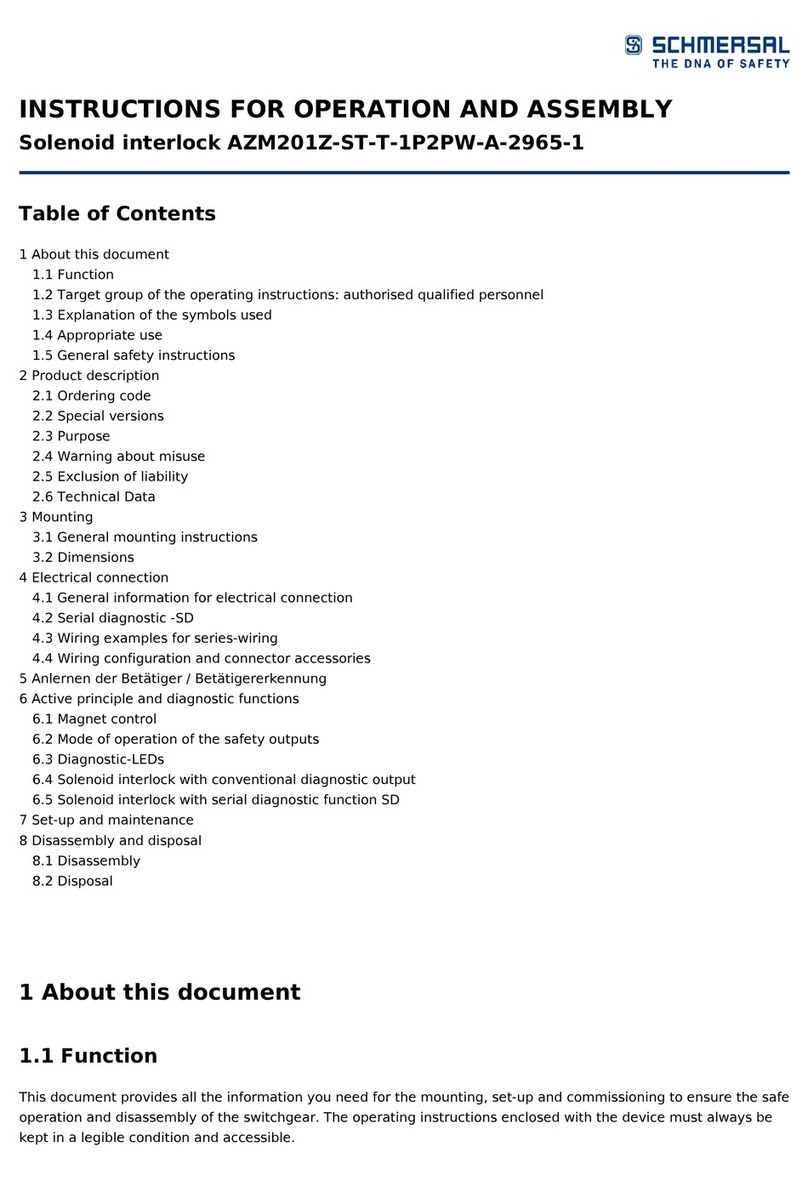
schmersal
schmersal AZM201Z-ST-T-1P2PW-A-2965-1 Instructions for operation

Modine Manufacturing
Modine Manufacturing ECO EG quick guide
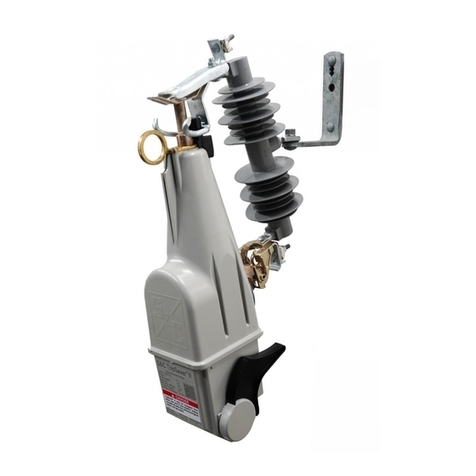
S&C
S&C TripSaver II Operation manual
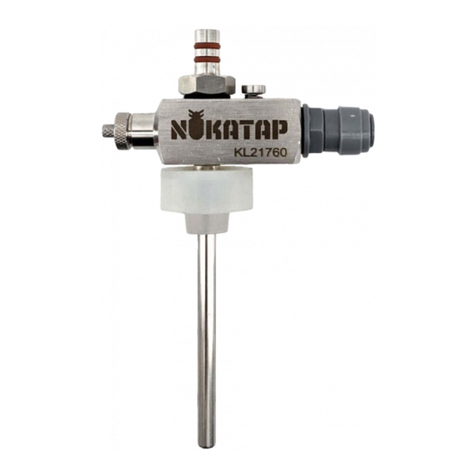
KegLand
KegLand NukaTap KL21760 instruction manual
